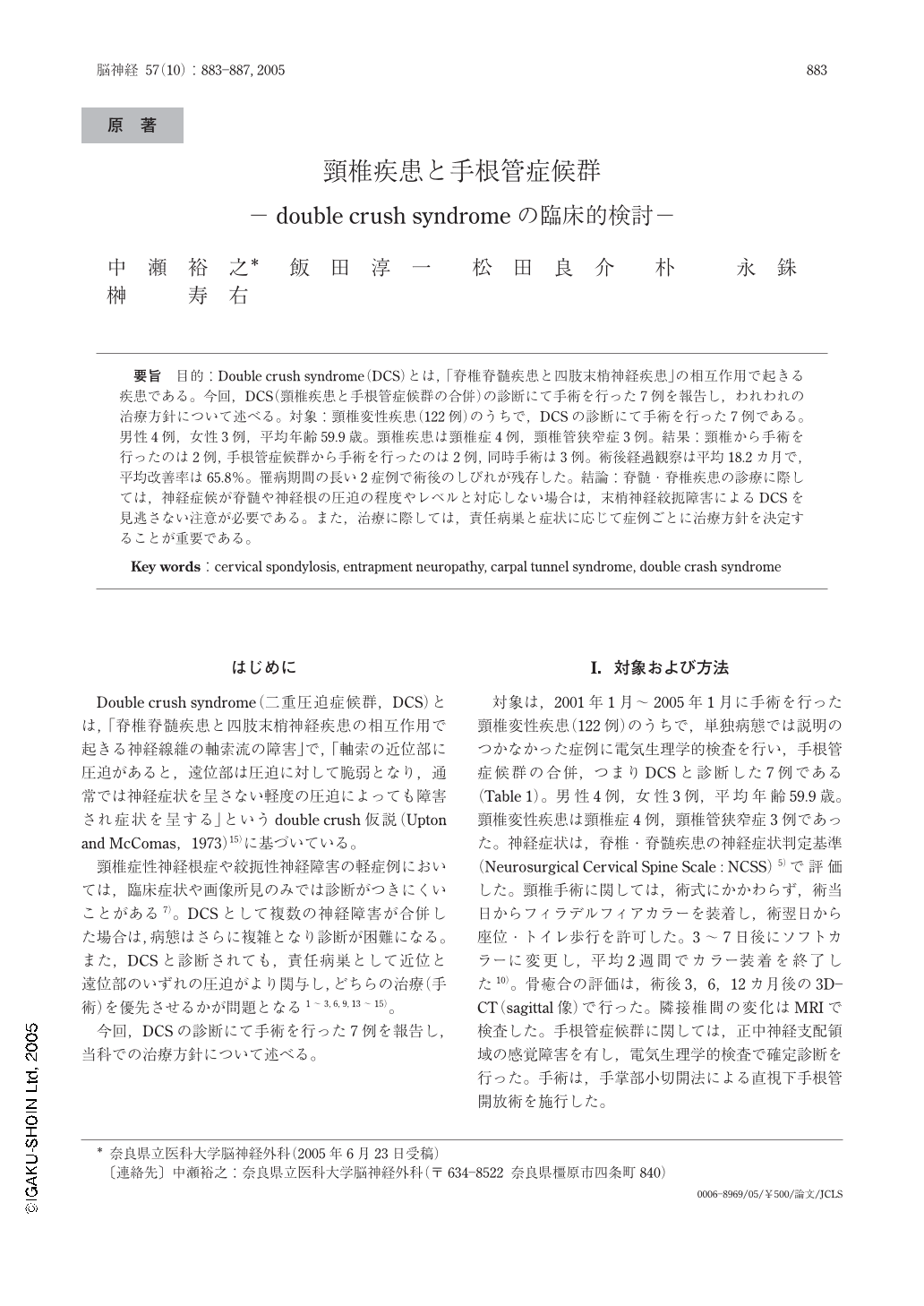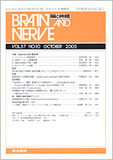Japanese
English
- 有料閲覧
- Abstract 文献概要
- 1ページ目 Look Inside
要旨 目的:Double crush syndrome(DCS)とは,「脊椎脊髄疾患と四肢末梢神経疾患」の相互作用で起きる疾患である。今回,DCS(頸椎疾患と手根管症候群の合併)の診断にて手術を行った7例を報告し,われわれの治療方針について述べる。対象:頸椎変性疾患(122例)のうちで,DCSの診断にて手術を行った7例である。男性4例,女性3例,平均年齢59.9歳。頸椎疾患は頸椎症4例,頸椎管狭窄症3例。結果:頸椎から手術を行ったのは2例,手根管症候群から手術を行ったのは2例,同時手術は3例。術後経過観察は平均18.2カ月で,平均改善率は65.8%。罹病期間の長い2症例で術後のしびれが残存した。結論:脊髄・脊椎疾患の診療に際しては,神経症候が脊髄や神経根の圧迫の程度やレベルと対応しない場合は,末梢神経絞扼障害によるDCSを見逃さない注意が必要である。また,治療に際しては,責任病巣と症状に応じて症例ごとに治療方針を決定することが重要である。
The hypothesis, “double crush syndrome (DCS)”, is that neural function could be impaired when single axons, having been compressed in one region, become especially susceptible to damage in another. We retrospectively review our surgical cases with both cervical lesion and carpal tunnel syndrome, i.e., DCS.
From January 2001 to January 2005, we have treated 7 patients (Male-4, Female-3, average age-59.9 years old) under the diagnosis of DCS. Cervical lesions were cervical spondylosis in 4 and cervical narrow canal in 3 patients. Peripheral entrapment neuropathy was carpal tunnel syndrome in all 7 cases. Initial operation was performed for cervical lesion in 2, carpal tunnel syndrome in 2, and 3 cases were operated simultaneously. The improvement rate by Neurosurgical Cervical Spine Scale (NCSS) was average 65.8%. The average follow-up period was 18.2 months. Good results can be obtained in 5 cases, and poor results in 2 cases who underwent initial operation under the diagnosis of single lesion.
It is well known that a discrepancy between neurological manifestation and neuro-imaging sometimes occurs in cervical lesions, and then DCS should be considered as a possible pathogenetic mechanism.
(Received : June 23, 2005)

Copyright © 2005, Igaku-Shoin Ltd. All rights reserved.


